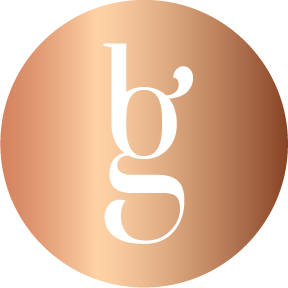1. Remembering
Q1: What is the wavelength of the Alexandrite laser used in the Motus AY machine?
A1: 755 nm.Q2: What is the wavelength of the Nd
laser used in the Motus AY machine?
A2: 1064 nm.Q3: Which chromophore is targeted by the 755 nm Alexandrite wavelength?
A3: Melanin.Q4: Which chromophore is targeted by the 1064 nm Nd
wavelength?
A4: Hemoglobin.
2. Understanding
Q1: Explain why the 755 nm wavelength is more effective for hair removal on lighter skin types.
A1: The 755 nm wavelength is absorbed more by melanin, making it ideal for targeting hair follicles in lighter skin without damaging the skin.Q2: Why is the 1064 nm wavelength safer for darker skin tones?
A2: The 1064 nm wavelength penetrates deeper and is less absorbed by melanin, reducing the risk of burns on darker skin.Q3: How does melanin absorption vary between the 755 nm and 1064 nm wavelengths?
A3: The 755 nm wavelength is absorbed more by melanin, while the 1064 nm wavelength is absorbed less, making it safer for darker skin types.Q4: What is the primary target of the 1064 nm wavelength in vascular treatments?
A4: Hemoglobin in blood vessels.
3. Applying
Q1: If a client has fair skin and dark hair, which wavelength would you use for hair removal?
A1: 755 nm Alexandrite, as it is better absorbed by melanin in the hair without harming fair skin.Q2: How would you adjust the wavelength if you are treating a client with very dark skin?
A2: Use the 1064 nm Ndwavelength to minimize skin damage and safely target the hair follicles.
Q3: In what scenario would you prefer the 1064 nm wavelength over the 755 nm for hair removal?
A3: For clients with darker skin tones or for deep hair follicles, as the 1064 nm wavelength penetrates deeper without affecting the skin’s melanin.Q4: Which wavelength would you use for treating vascular lesions and why?
A4: 1064 nm Nd, as it effectively targets hemoglobin in the blood vessels without damaging the skin.
4. Analyzing
Q1: Compare the risks of using the 755 nm wavelength on light skin versus dark skin.
A1: On light skin, the 755 nm wavelength is absorbed mostly by the hair follicles. On dark skin, the high melanin content increases the risk of burns.Q2: How does the penetration depth of the 1064 nm wavelength affect its effectiveness in treating deeper hair follicles?
A2: The 1064 nm wavelength penetrates deeper into the skin, making it effective for targeting deep hair follicles and vascular lesions.Q3: Analyze how selective photothermolysis applies to the 755 nm and 1064 nm wavelengths during hair removal.
A3: The 755 nm selectively targets melanin-rich hair follicles, while the 1064 nm wavelength targets deeper structures with less melanin absorption, preventing skin damage.Q4: Why might you choose the 755 nm wavelength for thin, light hair compared to the 1064 nm wavelength?
A4: The 755 nm wavelength has a higher absorption rate in melanin, making it more effective for thin, lighter hair that contains less pigment.
5. Evaluating
Q1: Assess why the 1064 nm wavelength is preferred for vascular treatments.
A1: It is better absorbed by hemoglobin, targeting blood vessels effectively while minimizing damage to the surrounding skin.Q2: Evaluate the safety of using the 755 nm wavelength on a client with Fitzpatrick Skin Type IV.
A2: The 755 nm wavelength carries a higher risk of burns on darker skin, as melanin in the skin absorbs more of the light, making it less safe for Skin Type IV.Q3: How effective is the 755 nm wavelength in treating superficial versus deep hair follicles?
A3: The 755 nm wavelength is highly effective for superficial hair follicles, but less so for deep follicles, which would require the 1064 nm wavelength.Q4: Why is it important to consider skin type when choosing between the 755 nm and 1064 nm wavelengths?
A4: Skin type affects melanin levels, which influences how much energy is absorbed. Choosing the wrong wavelength can cause burns or ineffective treatments.
6. Creating
Q1: Design a treatment plan for a client with fair skin and light hair using the Alexandrite wavelength.
A1: Use the 755 nm wavelength at lower fluence levels to target the light hair, as it has lower melanin content, and ensure cooling to avoid skin irritation.Q2: Create a safety protocol for using the 1064 nm wavelength on dark skin.
A2: Use the 1064 nm wavelength at lower fluence levels to avoid excessive heat absorption by the skin’s melanin. Ensure cooling and monitor skin reactions during the procedure.Q3: Propose a method for alternating between 755 nm and 1064 nm wavelengths in a multi-treatment session.
A3: Use the 755 nm for superficial hair removal on light skin areas, and switch to the 1064 nm for deeper hair follicles or areas with darker skin, ensuring appropriate cooling between treatments.Q4: Develop a guideline for selecting the appropriate wavelength based on a client’s Fitzpatrick skin type.
A4: For Skin Types I-III, use the 755 nm Alexandrite wavelength. For Skin Types IV-VI, use the 1064 nm Ndwavelength to minimize skin damage while effectively treating hair.

